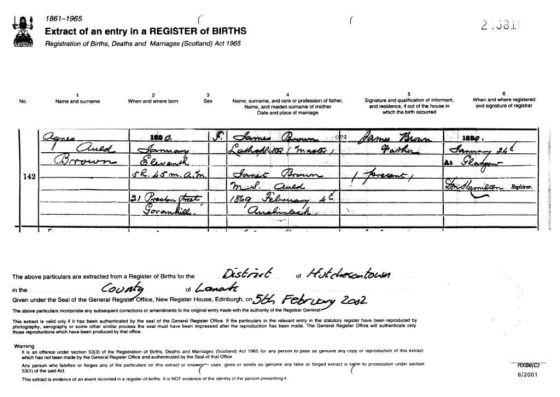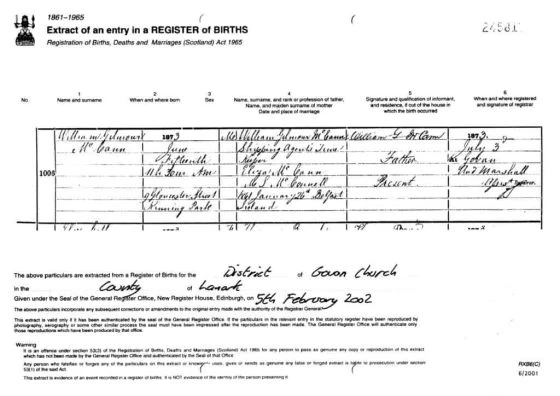William McCann and Agnes Brown
William Gilmour McCann
William was born in Govan, Glasgow, Scotland on 15 June 1873. He was the son of William Gilmour McCann and Eliza McConnell who had emigrated from Ireland during the Great Famine. Their story is told on a separate page.
Agnes Auld Brown
Agnes was born in Govanhill, Glasgow, Scotland on 11 January 1880. She was the daughter of James Brown and Janet Auld who had moved to Glasgow from Kilmarnock in Ayrshire. Their story is told on a separate page.
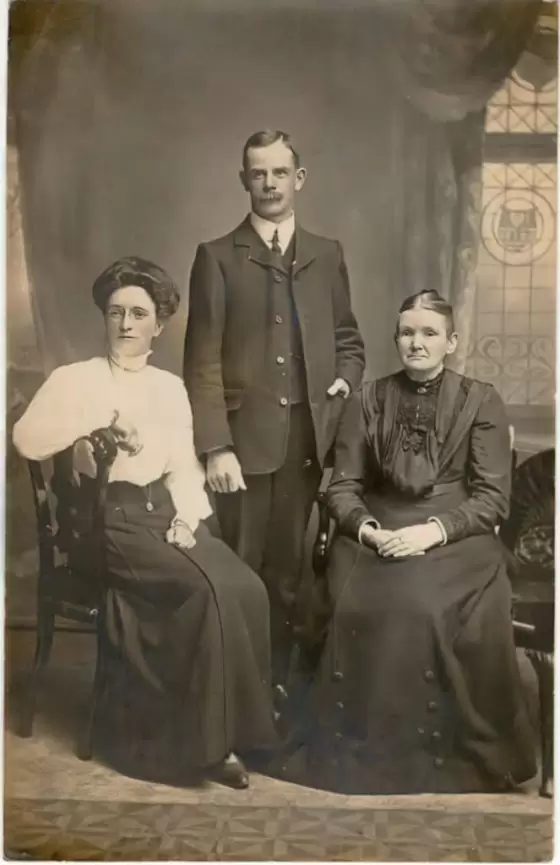
William’s Early Years
William spent his early years in various locations close to the River Clyde. William’s father who had worked as a teacher in Belfast was now working as a timekeeper in the docks.
A timekeeper was the person responsible for ensuring that when a ship arrived in Glasgow, it’s cargo could be unloaded and any new cargo loaded as quickly as possible, to ensure that the time the ship spent in harbour was kept to a minimum.
In addition to unloading and loading cargo, it was the timekeeper’s responsibilty to ensure that any provisions requested for the ship were available on the quayside and could be loaded at the same time as the cargo.
As most departures will want to leave on a high tide, there was very little scope for delay, which could be costly for the ship’s owners. The timekeeper was a responsible position in the docks.
William McCann Junior and his brother both took positions as mercantile clerks.
Birth – Agnes McCann
Agnes Brown was born at 21 Preston Street in Hutchesontown. Hutchesontown is an inner-city area in Glasgow. Mostly residential, it is situated directly south of the River Clyde and forms part of the wider historic Gorbals district.
Following the Second World War, Hutchesontown was declared a Comprehensive Development Area (CDA) in 1957, in the aftermath of the Bruce Report. This called for the mass gentrification of the area which took the form of slum clearance and the replacement of overcrowded, insanitary tenement housing with new homes in high rise tower blocks. The area became almost unrecognisable from its previous appearance, with blocks of tenements swept away along with several Victorian and Edwardian-era churches and civic buildings which in later times would have been considered to be of architectural merit.
Hutchesontown was, in effect, used as a testing ground for similar schemes around the city. It was decided to divide the area into five “zones” which were given to different architects to implement a mixture of different schemes.
Kinning Park
From 1850, Kinning Park grew from a rural village to a busy centre mainly inhabited by artisans and labourers. Its principal industries were engineering, bread and biscuit baking, soap-making and paint-making. It also incorporates some of the most football-obsessed public houses in Glasgow, almost all of them favouring the nearby Rangers. Rangers once played at the Kinning Park ground in West Scotland Street from 1876 to 1887.
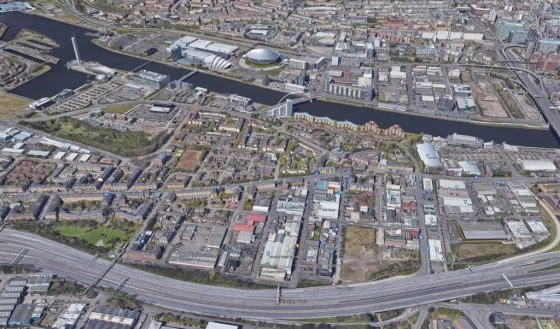
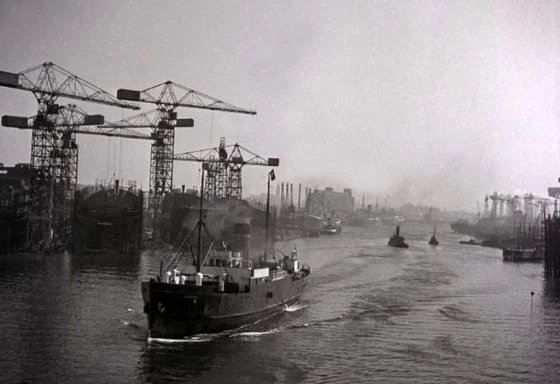
Glasgow’s Shipyards
In the nineteenth century, Glasgow as a thriving port and the River Clyde was lined with docks, shipyards and graving docks.
After many years of dereliction caused by the decline of shipbuilding and the migration of Glasgow’s docks to the Firth of Clyde, since the mid-1980s the banks of the River Clyde at Glasgow have become a focus for property developers.
Mirroring the London Docklands scheme, the old docks, and sites of old granaries, wharves and shipyards in Glasgow are being redeveloped into up-market residential apartments, office complexes and leisure facilities.
Agnes Brown
The photograph opposite looks like a candid photo and it looks to me as though it was taken in the back garden of their house in Ormonde Avenue.
I am sure that if my grandmother had known it was being taken, she would have insisted on wearing a hat and adopting a more formal pose.
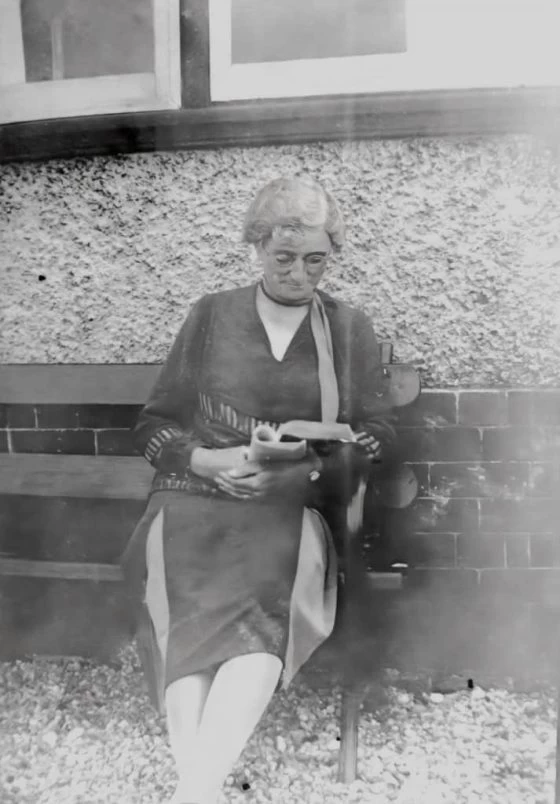
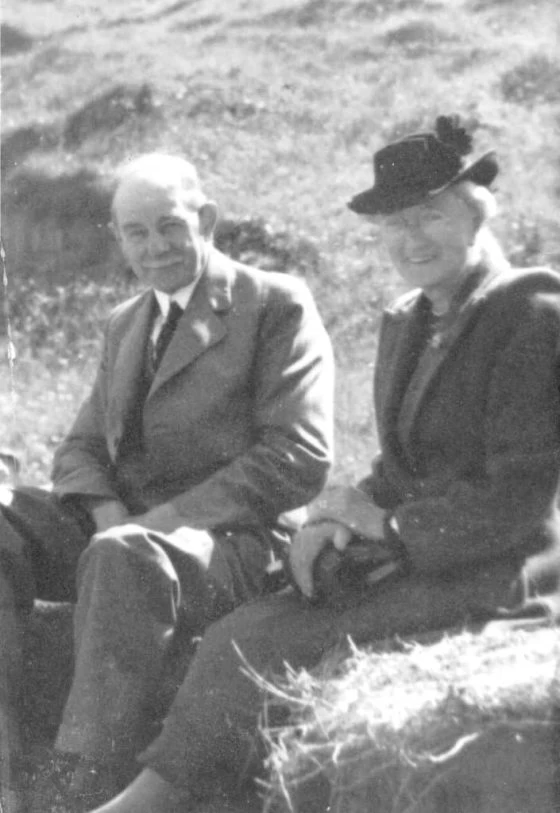
William and Agnes in later life
William & Agnes
Agnes McCann was always smartly dressed. She had worked as a buyer in the china department of a department store in Central Glasgow.
This might explain why we seem to have inherited more china tea services than we could ever need.
William McCann was nearly always smiling, and I recall visiting Ormonde Avenue in the 1950s. In those days milk was delivered to each doorstep by the milkman. It was in the days before electric milkfloats and always remember my grandfather waiting for the horse and cart to arrive, with the milk. He would then rush out with a shovel to clean up any manure that the horse might have left to spread on his roses.
They were married on the 12 April 1910.
Agnes Brown
The photograph opposite is Agnes Brown’s visiting card. It shows that they named their house in Ormonde Avenue “Tordeevra”. I thought nothing of this at the time, but it provided the link to Northern Ireland when I was trying to trace my grandfather’s Irish roots.
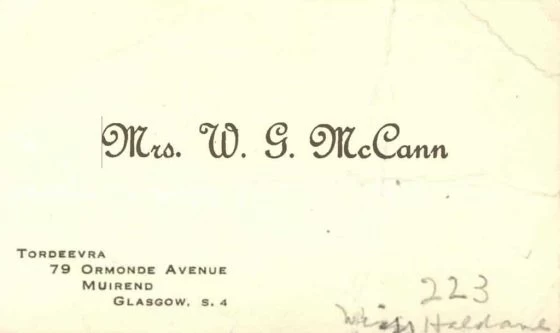
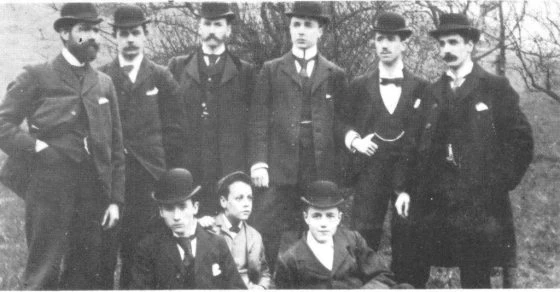
Scott and Rae
Having worked in a number of clerical roles for companies associated with shipping and the docks. William joined Scott and Rae a firm of monumental sculptors and builders located in Eglinton Street. He worked as a granite buyer and regularly travelled to Aberdeen to source the granite. He eventually became the firms Company Secretary.
I have a recollection of being told that the firm was involved in either creating or restoring the granite balustrade on Jamaica Bridge, Glasgow. I can find no official confirmation of this, so might have to just remain an unsubstantiated recollection.
In the photograph opposite from a booklet of Scott and Rae, members of staff pose for a group photo. William McCann was second from the left.
Largs
One of the few photos of William where he is not smiling. I don’t know the location for certain, but I believe it to be taken in Largs on the Ayrshire coast.
My mother’s sister lived with her parents and she told us that William and Agnes liked nothing better than a day trip to Largs. I recall being taken on such trips myself as a child. A visit to Prestwick to sit on the beach making sandcastles and watching the planes take off from Prestwick Airport. Then on to Largs for a walk on beach, finishing off with an ice cream at Nardinis.
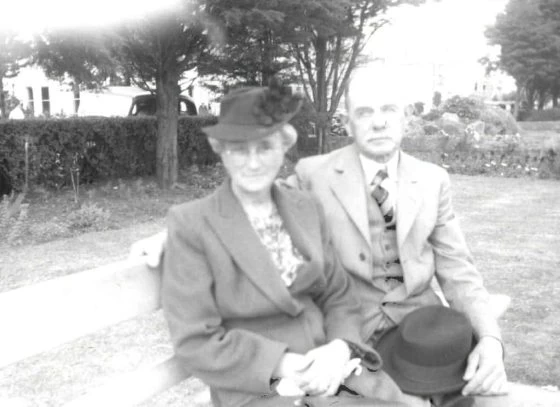
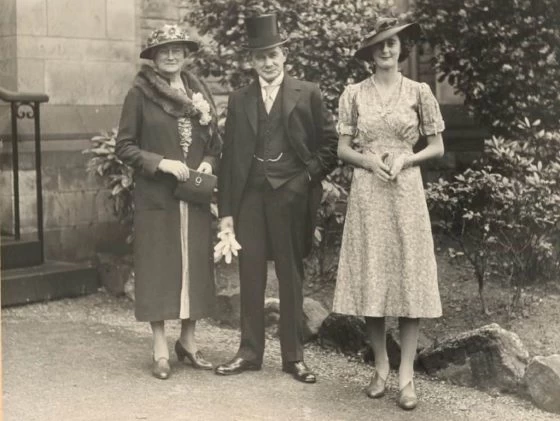
The McCann Family
William McCann and Agnes Brown, with their daughter Janet McCann. My grandparents were always impeccably dressed. I particularly like the photo of my grandfather in top hat and tails, always smiling and standing with his feet in his hallmark “ten to two” stance. He even walked with his feet still set at “ten to two”, just like Charlie Chaplin but without the walking stick. Immaculately polished shoes, as always.
McCann Family Photograph
I would guess from the casual nature of my grandfather’s hat, that the McCanns were on holiday; they normally never ventured far. so probably Ayrshire coast but they did occasionally venture further afield to Dumfries and Galloway.
My mother, Betty McCann is sitting in the centre and my Aunt, Janet McCann is standing on the right.
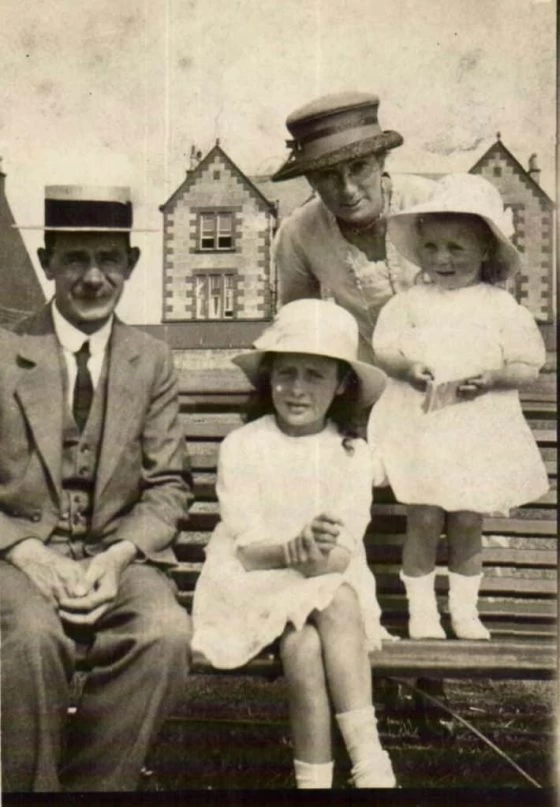
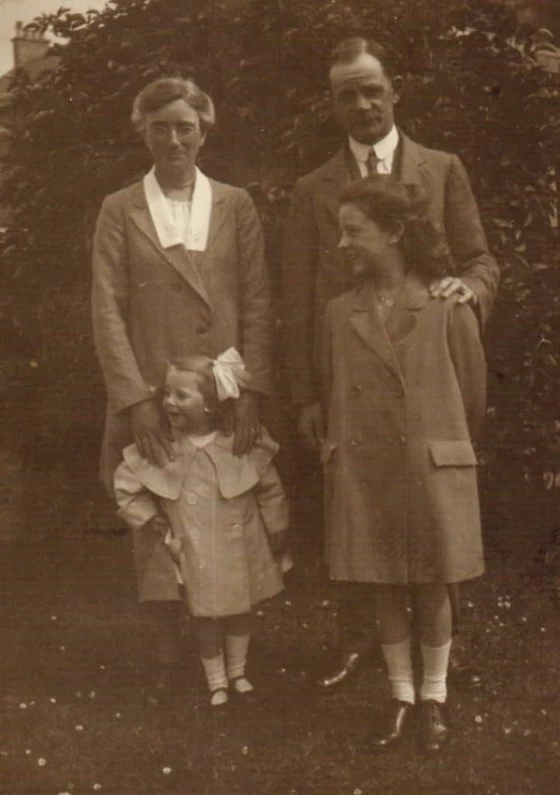
Ormonde Avenue
Judging by the ages of the children I would guess that this photo was taken in the mid nineteen twenties, and it looks like the back garden at Ormonde Avenue.
The worry lines that furrow my grandfather’s brow perhaps portend the coming General Strike and financial crash of 1929, followed by years of hardship and recession in the nineteen thirties.
In spite of the troubled economic period, William was lucky to remain employed throughout.
79 Ormonde Avenue
The photograph opposite shows Ormonde Avenue today. The painted sign on the glass fanlight “Tordeevra” has now gone. The roses are gone too, that my grandfather so carefully cultivated with manure from the milk cart.
Agnes died on her eightieth birthday on 11 January 1960. My aunt told me that her father just gave up after Agnes died. He took to his bed and died within four weeks of his wife. She always said that he died of a broken heart.
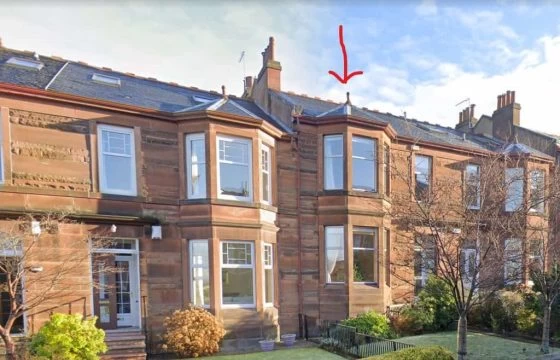
The McCann Family
This short video clip shows William McCann and Agnes Brown visiting their daughter Betty McCann’s house at Glenroy, Stanhope in the early 1950s. Also present is Betty’s sister Janet McCann and their two grandchildren, myself and my sister.
